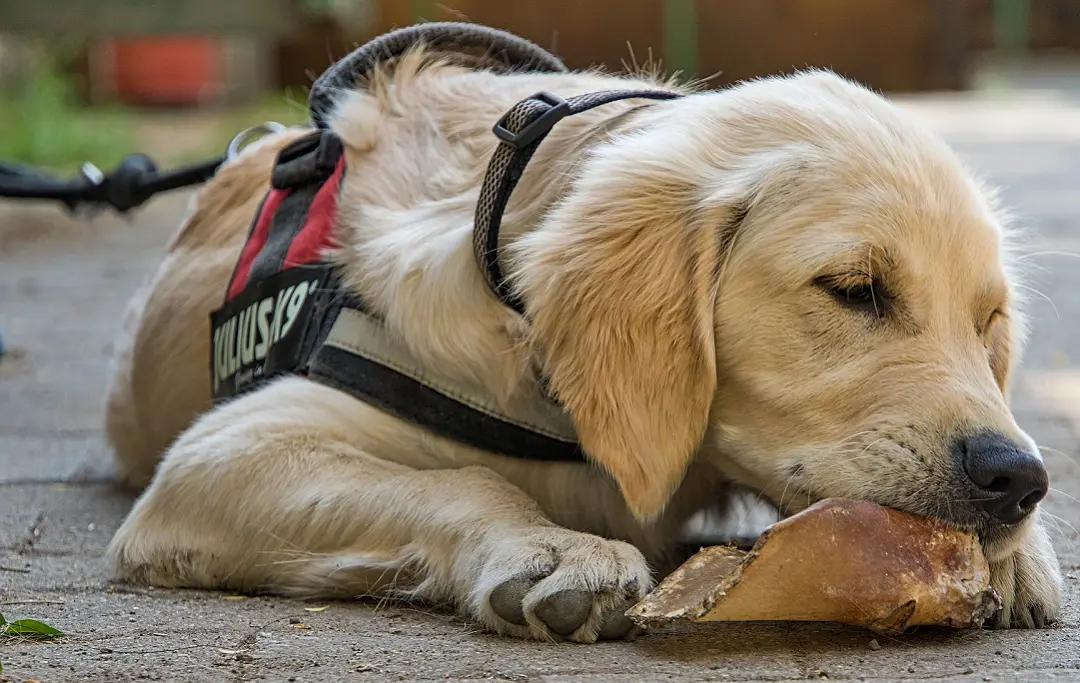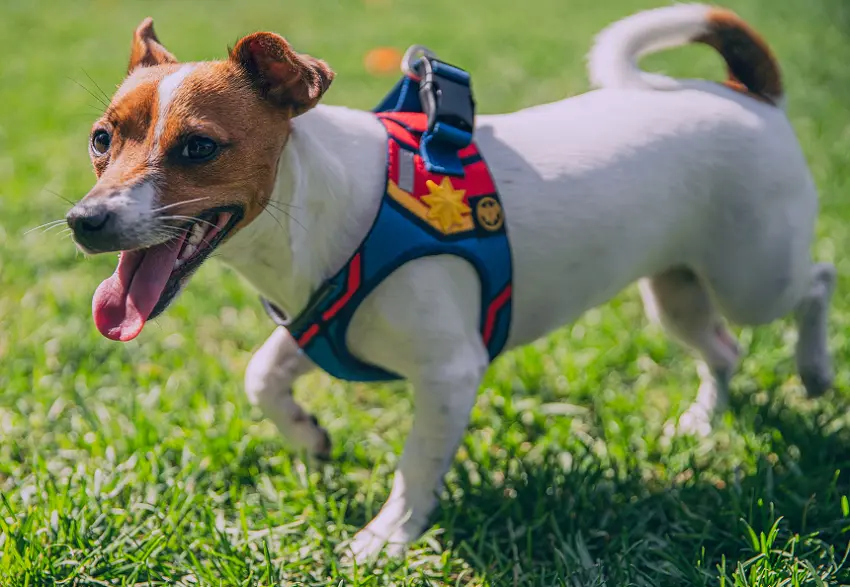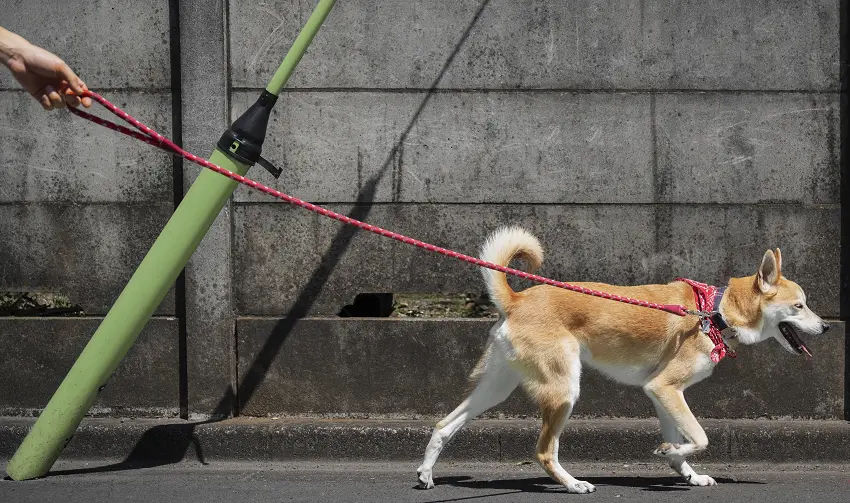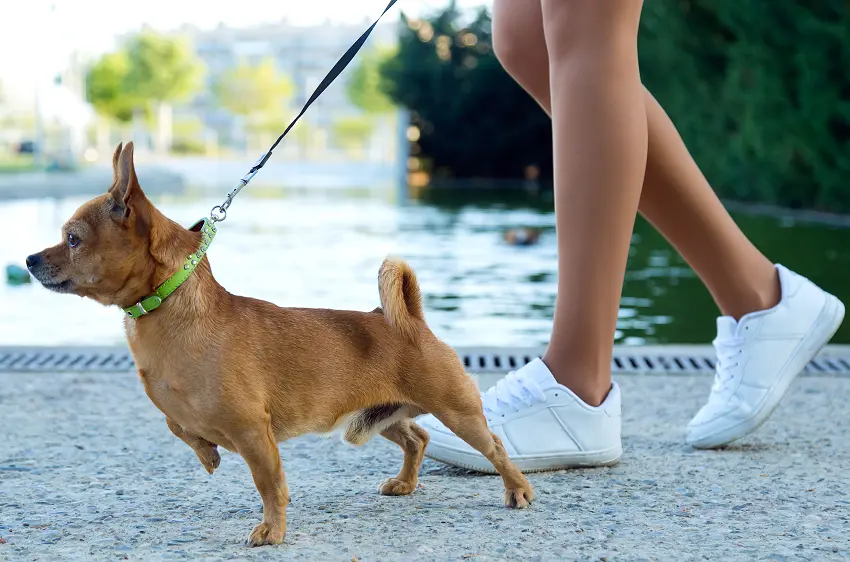How To Make A Dog Harness: DIY Guide
Do you want to save some money by not buying a harness for your pet? Knowing how to make a dog harness is the key.
For this post, I will share how I made dog harnesses for my dog Sherlock using fabric and paracord. It’s quite easy, even if you’re not a very crafty person.

How To Make A Dog Harness Out Of Fabric?

The first material we’re going to use is fabric. This is the most common material used on commercially available dog harnesses, so it’s safe and comfy for dogs.
Also, the fabric is easy to come by, and you don’t even have to spend a single dollar if you have some old clothes you no longer use.
Material Required:
- Any fabric of your choice (preferably a bit thick to prevent ripping)
- A pattern
- A pair of scissors
- Sewing materials
- Seams from an old pair of jeans
- A D-ring
- Strong Velcro or buckles
How to do it?
- First, cut the pattern indicated in the video above. You can adjust the size to suit your dog. I have to make a massive adjustment since Sherlock is a big Goldie.
- Cut up to four layers of this pattern to make the harness thick. If you’re using thick fabric, two layers will do.
- After that, stitch all the layers together, ensuring that you tuck the seams inside to prevent chafing the dog’s skin.
- Once you have the main part of the dog harness, cut a seam from an old jeans’ crotch. This is the part that will hold the D-ring.
- Stitch the seam in the middle of the harness, parallel to the dog’s body once worn. Don’t forget to loop the D-ring that will hold the leash. Otherwise, you’ll have to redo this part.
- The last part is attaching the enclosures of the dog harness. You can use buckles here by cutting a few pieces of jeans to attach them to the harness.
- For small dogs, Velcro is more than enough. Place Velcro on all four points of the harness.
How To Make A Dog Harness Out Of Paracord?

If you have a large dog that can escape from fabric harnesses, the next best option is one made of paracord. You should use paracord instead of rope to avoid chafing your dog’s skin. Below are the things and steps you need:
Material Required:
- Long paracord
- A pair of scissors
- Tape measure
- Paracord fids (alternative: needle nose pliers)
- A pair of buckles
- Lighter
How to do it?
- First, take measurements of your dog’s body. Basically, you’ll need one foot of paracord for every inch of the measurement you took.
- In taking measurements, you should place three fingers underneath as a breathing room for the harness.
- Once you know how much paracord you need, find which part will go around your dog’s chest. You can do this by using the 1 foot per 1-inch proportion.
- You have to loop this part into the buckle and slide the other buckle piece on the paracord’s loose ends. Secure this piece by making loops on each paracord.
- After that, start weaving the paracord until you cover the circumference of your dog’s girth.
- Once you’ve reached the other buckle piece, cut the excess paracord, then singe the ends using a lighter to prevent it from unraveling.
- The next step is to make the part of the harness that will run parallel to your dog’s back.
- To attach the chest piece, use a paracord fid or a long nose plier to thread the new length of the paracord. Weave back through so the paracord will be looped on the girth strap that you just made.
- From there, start weaving until you reach the opposite side. Make sure that the length of the chest part is in line with the measurements you took from your dog.
- You should also attach the D-ring in the middle of the chest length.
How Do I Train My Dog Not To Pull On The Harness?

A dog harness prevents your dog from slipping out and is one of the necessary tools for a dog walker to carry.
Once you have learned how to make a dog harness, you need to train your dog.
Almost all dogs will pull the first time you put them on a harness and a lead. This is a normal reaction since the pooch is used to having the freedom to walk around.
When Sherlock was younger, he dragged my then 8-year-old son for a few feet in our yard because the lead was wounded on his wrist. To prevent this from happening to you and your dog, here are some of the tips I recommend:
Practice at home
- Before you bring your dog to the street, you should walk it around the house and yard first. This will help condition your dog and help you assess the pulling habits of your pet.
- You can do this for a few days before the actual walk so that you will be attuned to your dog’s pulling habits.
Keep the leash short
- You wouldn’t want to give too much freedom to a dog that pulls. Keep the leash short, so the pooch is walking beside you. I don’t recommend using retractable leashes since this is exactly the one that my son was holding when our dog dragged him.
Don’t walk an energy ball
- It’s not a good decision to take your dog on a walk if it’s packed with energy. Even if you have a strong dog harness, it won’t stop the pooch from pulling.
- I suggest giving the canine a short playtime at home to drain the excess energy. Rest for a few minutes, then walk the dog. Your pet will be calmer and less likely to pull in this case. Please read here: Why Does My Dog Walk Backwards
Keep treats in your pocket
- The moment your dog starts to pull, call its name, and wait for it to come back. If the dog retreats to your side, give it a treat immediately.
- If the pooch continues to pull, place the treat close to its nose, and coax it to your side. Once the dog comes back, hand the treat.
Dead stop
- Once you feel the tension on the leash, stop walking right away. Call your dog back and don’t continue walking until the pooch is calm.
Training is imperative
- Dogs with a strong prey drive will pull incessantly and even disregard your commands. You need to train the dog. If you need to enlist the help of an animal behaviorist, don’t hesitate to do so.
Be patient
- Leash pulling is a behavior that will take weeks to correct. You shouldn’t expect your dog to learn how to heel in just a few days.
- Patience and consistency are your bosom buddies in this process.
Obedience training
- You should never walk a dog that hasn’t undergone obedience training yet. It’s like carrying a ticking time bomb around with no way of detonating it.
- If your doggo is trained, brushing up with the basic commands will be helpful from time to time.
Is It Okay To Leave A Dog Harness On?
It’s okay to leave the harness on your dog after taking it for a walk. Still, you should remove it to let the dog’s fur and skin breathe. Putting it on 24/7 will cause the dog’s fur to become matted, which will trigger skin irritations.
Besides, you have to wash the harness regularly. While your dog doesn’t sweat, the harness can still harbor dust and dirt from outdoors.
Like collars, harnesses should never be a permanent thing on a dog. If you’re not bringing the pooch outside, you should remove the harness to prevent any irritations.
What Are Different Benefits And Harms of Dog Harness?
One of the major pros of the dog harness includes shifting the pressure from the neck to the overall body of the dog. You get a better control over your dog and present pulling behavior as it does not let the dog move forward.
However, an ill-fitted harness can be as dangerous as putting pressure on the wrong area with a collar. Moreoer, if the harness is worn for a prolonged period it can cause tangles and mats.
Conclusion
Knowing how to make a dog harness will save you some money. You only need some items at home to make a DIY but stylish gear for your beloved pooch.
Are you finding it hard to follow these instructions? Here’s a video guide courtesy of Paracording Around.
Just make sure that you train your pet for it to prevent pulling. Patience will go a long way here, especially if you have an energetic puppy.
Do you have other DIY harness designs? Share it with us in the comment section!
Thank you for reading!
